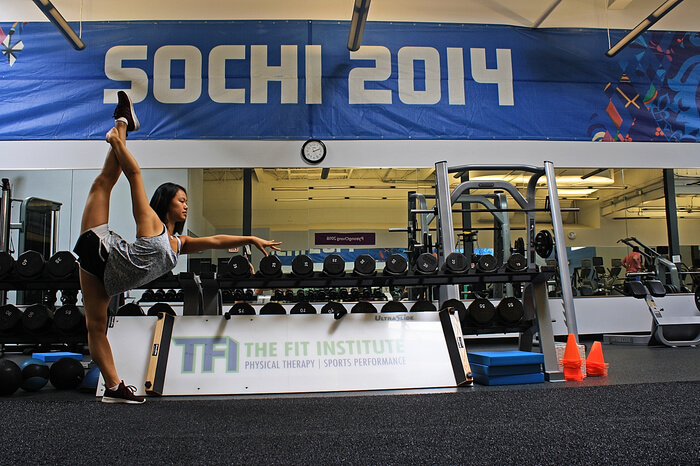Bend So You Don’t Break: the Importance of Stretching

Stretching is an activity that everyone should include in their daily routines as a way to keep the muscles and joints strong, flexible and healthy. Consistency, maintenance and a high volume of tension from stretching ensure you keep the range of motion you create.
Static
Static stretching is a technique where the muscle is stretched to its farthest point and held for a specific amount of time. Static stretching is best used during the cooldown period of a workout unless specific joint range of motion (ROM) is needed to perform specific movements.
Active
Static-Active stretching is a technique that involves relaxing the targeted muscle through only the contraction of the agonist muscle. An example of this would be contracting the quadriceps to relax the hamstrings. These stretches are usually held for around 10-15 seconds due to the high amount of tension created in the agonist muscles.
Passive
Static-Passive stretching is when muscles are stretched through the use of assistance through an apparatus or even just your hands. Some examples of this would be using a bench to elevate your leg to increase range of motion, a slanted platform to stretch the calves, a rope or holding your leg up with your hands to increase the ROM in your hamstrings.
Dynamic
Dynamic stretching involves more movement than static stretching and is best used as a warm up prior to training sessions. This technique allows for proper muscle activation and increases in range of motion without causing the muscle to become too relaxed prior to performing. Studies show that using static stretching prior to exercise can decrease muscle activation speed.
Ballistic
Ballistic stretching tends to be the most aggressive form of stretching when comparing all of the different types. Ballistic stretching uses the momentum of swinging the limbs to force extra range of motion. This form of stretching has the highest risk for injury and should be used with caution and under the supervision of a professional.
Pre-Contraction: PNF (Proprioceptive Neuromuscular Facilitation)
PNF is a useful form of stretching involving passive stretching combined with isometric contractions. Most research has shown that PNF has been extremely effective for increasing range of motion but not without risk. There are three different types of PNF stretching: hold-relax, hold-relax-contract and hold-relax-swing. Usually this advanced technique is used with athletes or those who already have proficient range of motion and maintain sufficient flexibility.
